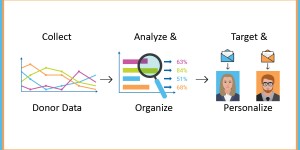Do you think of digital printing as an output technology or a marketing model? This is an important question, especially in today’s challenging business environment—because it’s both. If you don’t think of digital printing this way, maybe you need to rethink digital print.
For years, marketers have used the capabilities of digital presses to help them save money and “right size” their print volumes. Because the cost of digital press output is not dependent upon the length of run, marketers have gradually become comfortable with ditching their large inventories and printing on an as-needed basis. It’s helped keep a little cash in the pocket, while minimizing the waste associated with over-printing and having materials become obsolete before they get used. This also has great environmental benefits. “Right sizing” means savings in paper, ink and energy, as well as fossil fuels used in transportation.
Marketers who are thinking of digital production only in terms of production are missing tremendous opportunities to use this technology from a strategic marketing perspective, as well.
Say you attend four industry trade shows per year. You can look at digital print production two ways.
1. Production cost and logistics
The first approach looks at digital printing from its production and logistical benefits. Instead of printing 10,000 product brochures at the outset, you can print 2500 brochures at a time. This will allow you to minimize your upfront investment and update products between shows. Plus, you don’t need to figure out where to store the extra 7500 brochures once the first trade show is over.
2. Strategic marketing opportunities
The second approach looks at digital printing from a marketing perspective. Not only can you break down the 10,000 run into more manageable chunks, but you can also customize each batch to the individual show. Each show might have a slightly different focus, drawing a slightly different demographic of attendee. The selection of products, the marketing pitch and the presentation might be slightly different for each. By breaking down the runs into four separate batches, you can tweak the brochure for each show based on who its attendees are and what they are looking for.
As another example, let’s assume that you are running on a tight budget. You decide not to mail to your entire list, but only a percentage of it. From a production perspective, digital presses allow you to avoid paying a price penalty per piece for the lower volume. From a marketing perspective, you can think about how you want to split this list. Do you want to mail to the top 10%? Perhaps to your highest volume customers? Your bottom 10%? Try to reactivate dormant customer relationships? By targeting the mailing by customer profile or demographic, you can maximize this 10% and perhaps even get a better response than you would have from mailing to your entire list.
These are just two examples, but they illustrate the difference between thinking about digital printing as an output technology and thinking about it as a marketing model.
How are you thinking about digital printing? Call us today at 800.365.6687 to discuss how we can help you redefine your print communications.
More Insights To Enjoy:
+ The Money-Saving Magic of Personalization
+ Think Personalization, Think Green
© Action Graphics, 2012. Article taken from Action Insights, Issue 13. Sign up today to receive future issues of our newsletters.


